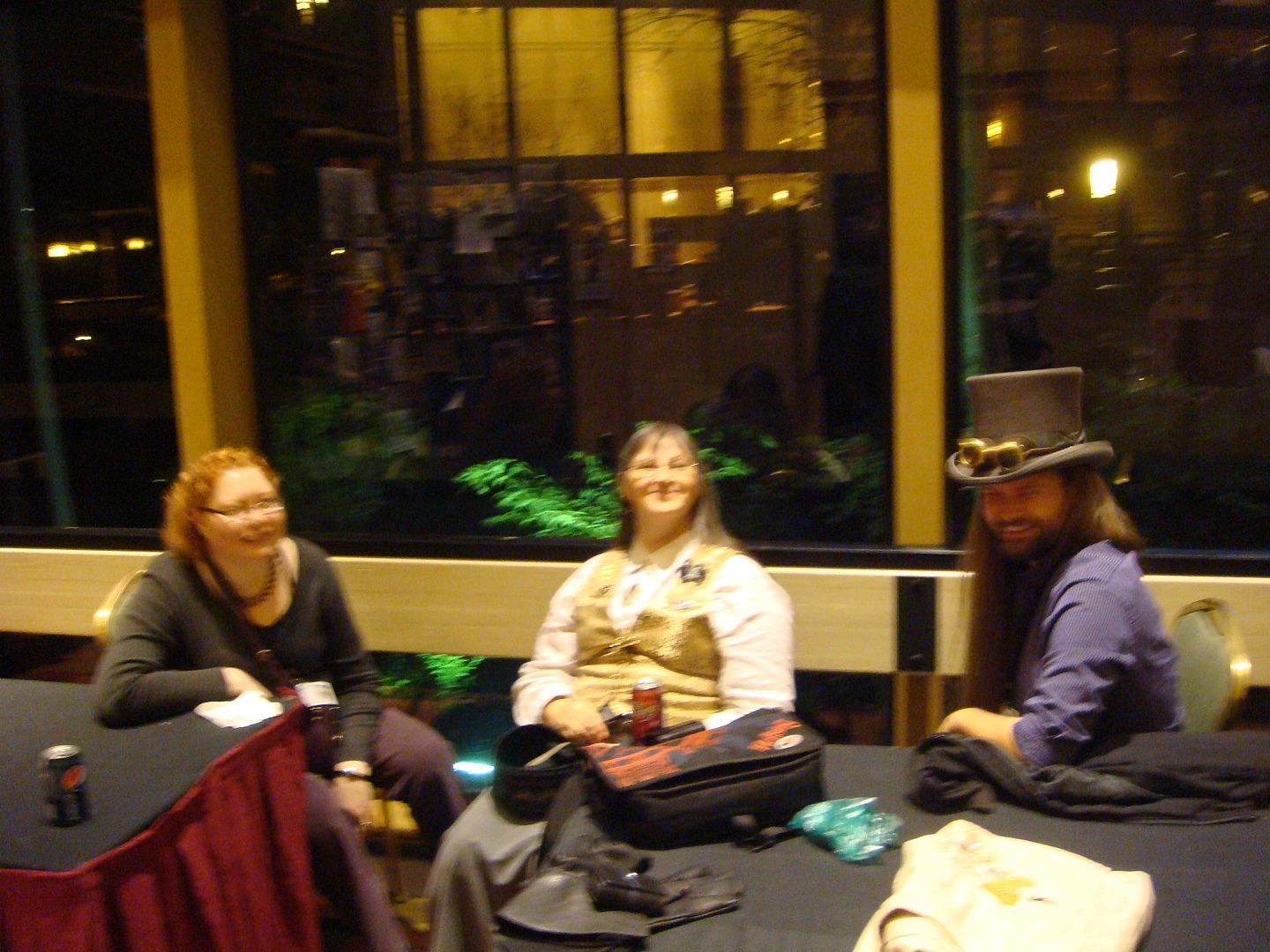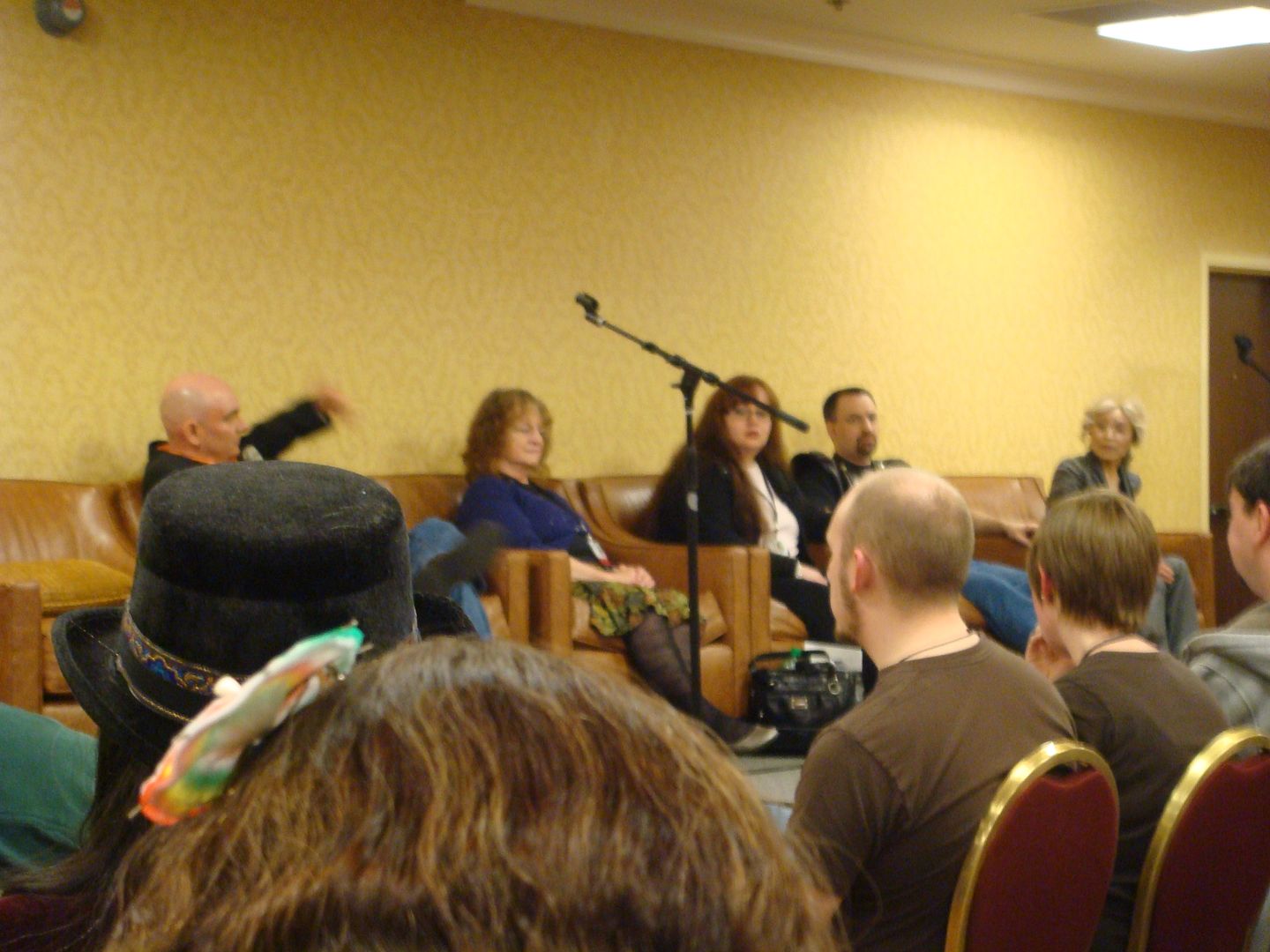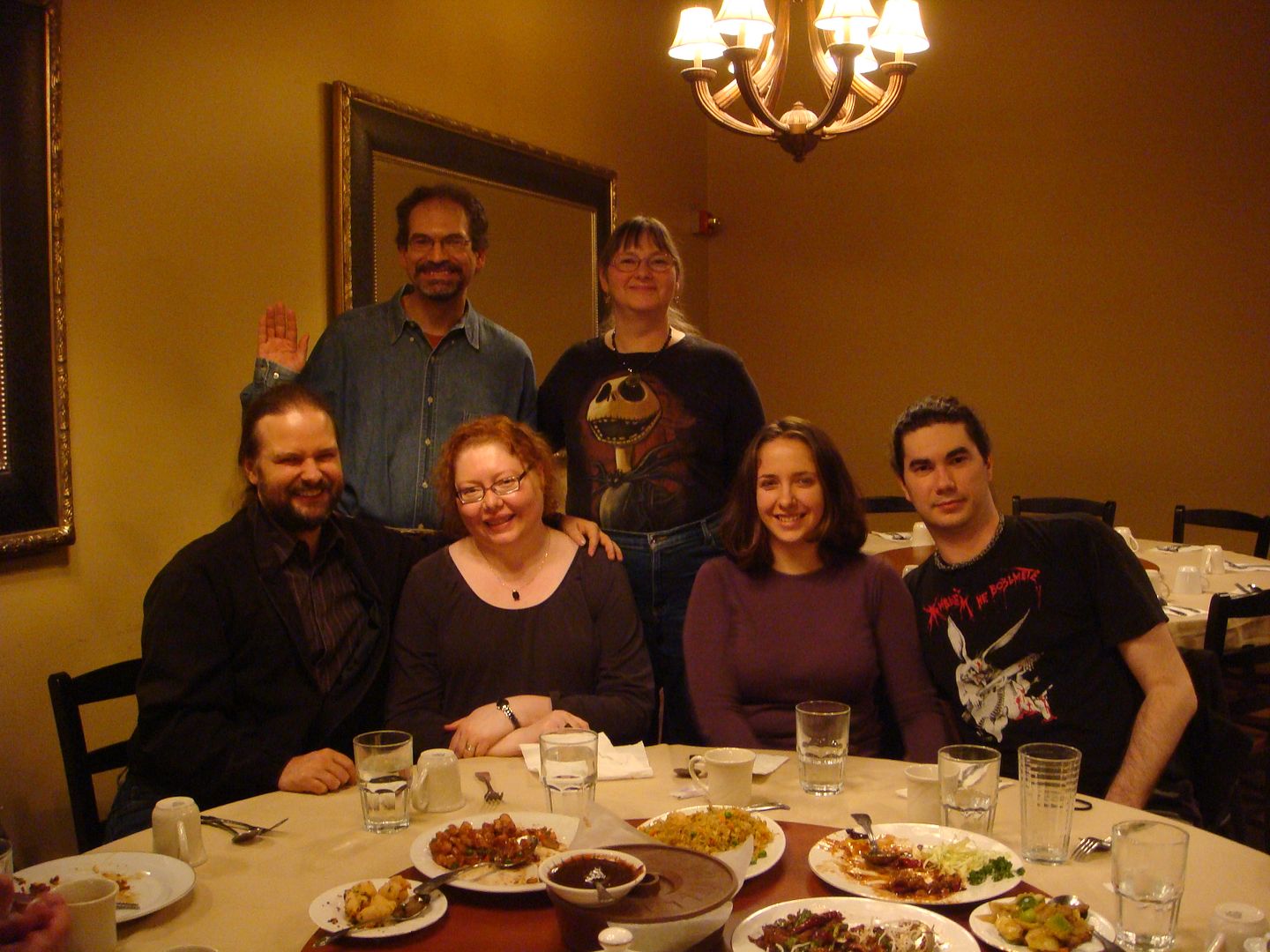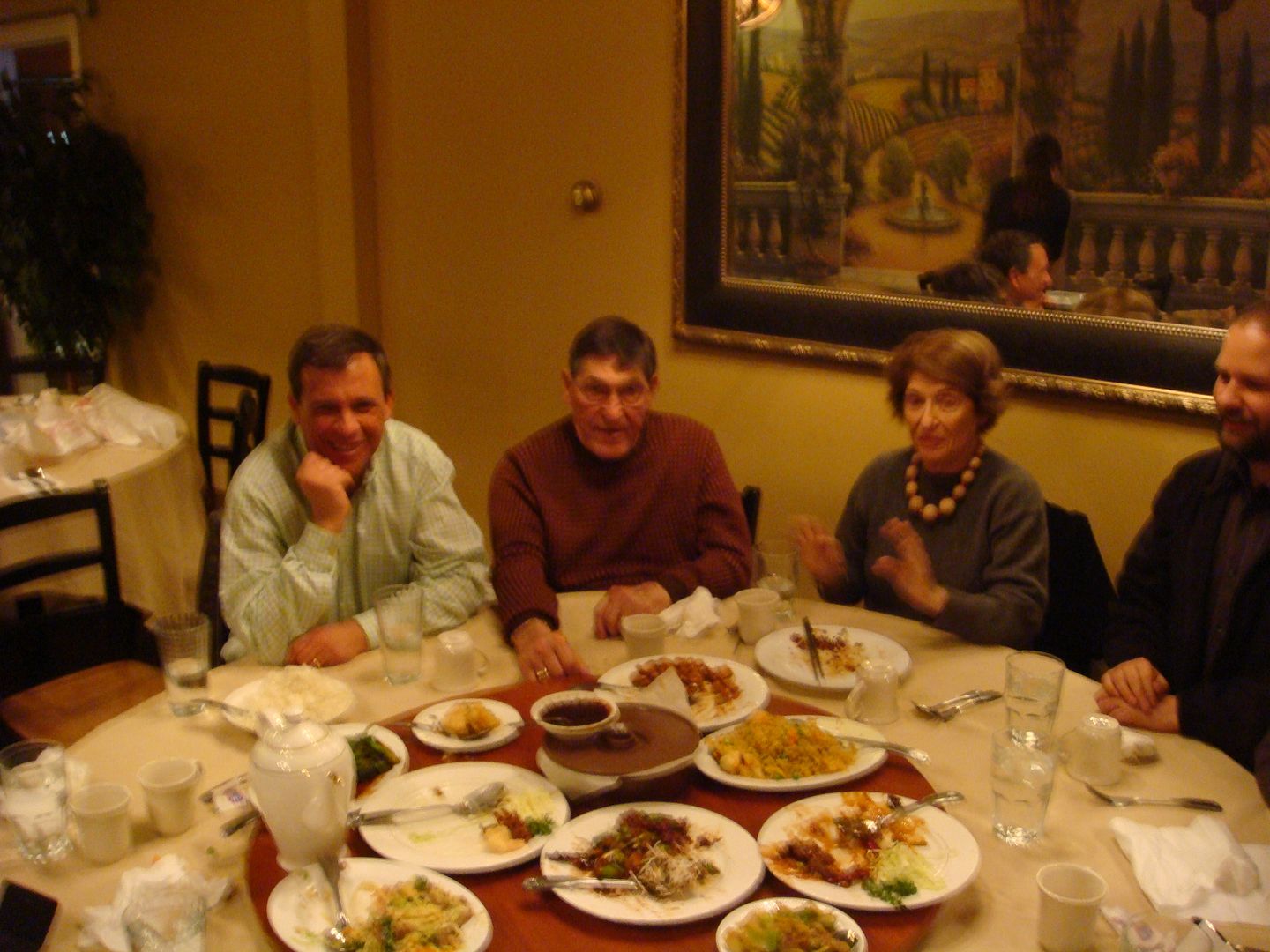Street & Smith's DOC SAVAGE series of pulp novels in the thirties and forties is exactly the sort of series that should have been made into a radio serial. It had a stalwart hero, exotic locales, characters with distinctive catch phrases, sinister villians, and non-stop action. Yet, oddly, at a time when LITTLE ORPHAN ANNIE of all stories was a popular radio series, Doc Savage's adventures did not make the cut. In 1985, National Public Radio remedied that lacuna by producing an all-new DOC SAVAGE serial, adapting two of Lester Dent's novels. That series has not been commercially available -- until now.
Radio Archives has packaged both novels' adaptations (along with an audio documentary about the making of the series) into a clamshell case graced with a painting of Doc and his cousin Pat Savage by frequent DS paperback artist Bob Larkin, and has made the whole set available for $24.98. I snatched it up, and so far I've listened to the adaptation of "Fear Cay" and part of "The Thousand-Headed Man." Now, these stories are pulp-hero fiction, so don't expect sub-plots or complex characterization. And there are some limitations imposed by the radio-drama format: There's a lot of dialogue describing what the characters are seeing; and Doc, who's generally taciturn in the pulp stories, is quite loquacious as he narrates his observations and deductions. Nevertheless, these stories are enormous fun for anyone who enjoys over-the-top 30's adventure. Recommended.
The scattershot musings of a Los Angeles appellate attorney and devotee of popular culture
Monday, May 30, 2011
Sunday, May 22, 2011
Wi-Fi Watering Holes: Coffee Tomo

Coffee Tomo, located on the corner of Sawtelle Boulevard and Mississippi Avenue in the Little Osaka neighborhood of West Los Angeles, opened recently as a nice counterpart to Cafe Balconi, located a block south. Although both are devoted to gourmet coffee in an upscale setting, Balconi emphasizes siphon coffee and pastries, while Tomo focuses on drip coffee and handmade pretzels. Futher, while Balconi is an "unplug" zone that has eschewed wi-fi, Tomo has a nice strong wi-fi signal.
The decor is exactly what I think a coffee house's decor should be --dark wood shelves, counter, and ceiling, and a huge coffee roaster in one corner where fresh coffee is roasted every hour. The music is jazz and classical, and the tables and chairs are all wood. Service is friendly and the drinks are pretty darn good. Recommended.
Sunday, May 15, 2011
Where the Booming Heavens Roar
During Marvel Comics' Silver Age heyday, in the 1960's, the three comic features that best showed off the synergy of the Stan Lee/Jack Kirby team were THE FANTASTIC FOUR, CAPTAIN AMERICA, and THOR. Each title showed a different aspect of Kirby mastery of comics art. The FF showcased Kirby's talent for science fiction, fostered by his lifelong love for SF literature and his fascination with new technologies. CAPTAIN AMERICA, which Kirby co-created with Joe Simon in the 1940's, reflected his love of action and his depiction of street-level brawling raised to a high art. And THOR was his fantasy title, in which he took his interest in mythology and mixed it with his science-fiction sensability to create his take on the Norse myths -- one in which Asgard is a gleaming metropolis of impossible architecture, with gleaming-plated warriors galloping horses across the Rainbow Bridge with nebulae and exploding stars hanging in the sky above.
Of the many accomplishments of Marvel Studios' and director Kenneth Branagh's movie adaption of THOR, the greatest is that it has brought Kirby's fantastic vision to life. Early in the movie, we see Thor, Loki, Sif, and the Warriors Three galloping their horses across Bifrost, the skies crowded with astronomical phenomena, and the scene looks like a Kirby panel brought to life.
This is an aspect that has been missing from the previous Marvel movies. In part, this is because the previous movies involved characters with which Kirby was less involved. SPIDER-MAN was primarily the visual creation of Steve Ditko and his artistic successor on the strip, John Romita. X-MEN was created by Lee and Kirby, but the movies focused less on Kirby's era and more on the modern incarnation of the mutants, capturing the look of artists such as Neal Adams, Dave Cockrum and John Byrne. Similarly, the Hulk was co-created by Kirby, but most of his adventures were drawn by other artists. Same for IRON MAN. As for the FANTASTIC FOUR movies, they did capture Kirby's versions of The Thing and the Silver Surfer, but squandered the chance to adapt Kirby's talents for set and technology design.
But THOR brings the Kirby. Not only in depicting Asgard, but also in the costume and armor design, the depiction of Thor in action (Thor's spinning hammer was thrilling to watch), and Kirby's giant-robot creation The Destroyer (which some critics derided as generic, probably because others have ripped off the design).
All that eye candy would be wasted, of course, if the movie weren't entertaining otherwise. Chris Hemsworth radiates tremendous charisma and likeability as Thor, which is essential since the character starts off the movie as an arrogant bully. Anthony Hopkins does such a good job as Odin (a kinder and gentler Odin than the tyrannical papa in the comics) that it's hard to imagine who else could play the part. And Tom Hiddleston as Loki manages to play his villainy so subtly that you can imagine why people continue to trust a guy who's, y'know, a trickster god. Further, although they play only supporting roles, the actors who play The Warriors Three (essentially taken whole from the comics, except Volstagg, who was apparently redesigned to resemble Gimli from the Lord of the Rings trilogy) and Sif are terrific.
The story (the product of a committee, most notably including comics and SF writer J. Michael Strazcynski) isn't brilliant, but it serves the movie. Notably, Thor's character arc of developing humility isn't accomplished through spending years as a lame doctor on earth (as in the comics) but through a couple of days of being mortal and powerless. After all, everything's speeded up in Hollywood. But it works.
THOR leaves me with high hopes for the next Kirby creation to appear on the big screen, in a couple of months, from the same studio: CAPTAIN AMERICA.
Of the many accomplishments of Marvel Studios' and director Kenneth Branagh's movie adaption of THOR, the greatest is that it has brought Kirby's fantastic vision to life. Early in the movie, we see Thor, Loki, Sif, and the Warriors Three galloping their horses across Bifrost, the skies crowded with astronomical phenomena, and the scene looks like a Kirby panel brought to life.
This is an aspect that has been missing from the previous Marvel movies. In part, this is because the previous movies involved characters with which Kirby was less involved. SPIDER-MAN was primarily the visual creation of Steve Ditko and his artistic successor on the strip, John Romita. X-MEN was created by Lee and Kirby, but the movies focused less on Kirby's era and more on the modern incarnation of the mutants, capturing the look of artists such as Neal Adams, Dave Cockrum and John Byrne. Similarly, the Hulk was co-created by Kirby, but most of his adventures were drawn by other artists. Same for IRON MAN. As for the FANTASTIC FOUR movies, they did capture Kirby's versions of The Thing and the Silver Surfer, but squandered the chance to adapt Kirby's talents for set and technology design.
But THOR brings the Kirby. Not only in depicting Asgard, but also in the costume and armor design, the depiction of Thor in action (Thor's spinning hammer was thrilling to watch), and Kirby's giant-robot creation The Destroyer (which some critics derided as generic, probably because others have ripped off the design).
All that eye candy would be wasted, of course, if the movie weren't entertaining otherwise. Chris Hemsworth radiates tremendous charisma and likeability as Thor, which is essential since the character starts off the movie as an arrogant bully. Anthony Hopkins does such a good job as Odin (a kinder and gentler Odin than the tyrannical papa in the comics) that it's hard to imagine who else could play the part. And Tom Hiddleston as Loki manages to play his villainy so subtly that you can imagine why people continue to trust a guy who's, y'know, a trickster god. Further, although they play only supporting roles, the actors who play The Warriors Three (essentially taken whole from the comics, except Volstagg, who was apparently redesigned to resemble Gimli from the Lord of the Rings trilogy) and Sif are terrific.
The story (the product of a committee, most notably including comics and SF writer J. Michael Strazcynski) isn't brilliant, but it serves the movie. Notably, Thor's character arc of developing humility isn't accomplished through spending years as a lame doctor on earth (as in the comics) but through a couple of days of being mortal and powerless. After all, everything's speeded up in Hollywood. But it works.
THOR leaves me with high hopes for the next Kirby creation to appear on the big screen, in a couple of months, from the same studio: CAPTAIN AMERICA.
Let Us Gather by the Gaslight





Last weekend, Amy and I attended the first annual Gaslight Gathering steampunk convention at the Town & Country Inn resort in San Diego. In the spirit of the event, we traveled there and back via train (Amtrak, not steam, alas). The event was marked by sunny weather, gorgeous costumes, a dealer's room stuffed with brass and octopi images, some thought-provoking panels, displays of real and fake steam-era tech, and (due to the sprawling layout of the Inn and lack of signage), lots of wandering and scrutiny of maps.
The event was well-attended for a first effort. How much did we enjoy it? Well, we've signed up for next year.
Tuesday, May 10, 2011
Sunday, May 01, 2011
Norwescon 34: The Future of My Past Was My Present
As of 1982, I had attended two conventions: The 5,000-attendee 1980 San Diego Comic-Con, which had made a huge impression on me and contributed to my eventual decision to live in Southern California; and the 1981 Moscon, a 300-attendee regional con in Moscow, Idaho, a couple of hours drive from my hometown. In the spring of 1982, with my parents' permission, I flew up to Seattle to stay with my sister while I attended the fifth Norwescon, the science fiction convention in Seattle. Norwescon was the first large convention I attended devoted primarily to science fiction. It drew world-class guests, including Artist guest of honor Michael Whelan, the leading SF and fantasy illustrator of the time (now he is pursuing fine art full-time); writer guest of honor Thomas Disch (who, horribly, committed suicide three years ago); fan guest of honor Bob Shaw, who came to the con from Ireland (he passed away in 1996). The attendance was 1,375, which seemed like a lot of people then. I dined at the con with friends I had made through Northwest fandom, and made a new friend, cartoonist Phil Yeh, whom I still chat with every year at Comic-Con.
Although I've attended dozens of conventions since then, my only other contact with Norwescon was a stopover in 1984 while I waited at SeaTac airport for a flight home for spring break.
That nearly thirty year Norwescon fast was broken last week, as Amy and I attended Norwescon 34, still held in SeaTac. There were two occasions for the trip. First, two of Amy's favorite fantasy writers, Patricia McKillip and Jim Butcher, were guests of honor, along with Butcher's wife, author Shannon Butcher, and fantastic illustrator Kinuko Y. Craft. Second, we got to spend several days with our friends Rick Marshall and Beverly Saling, whom we seldom see except when our travels take us to Seattle.


The fun started on the first day of the con, Thursday (despite the con losing our preregistrations). The con had revived the custom of holding a guest of honor banquet, at which the guests mingle with ticket-buyers. We sat at Ms. McKillip's table, and Amy got to sit next to Ms. McKillip as we dined with her and her husband.
Here's a photo of all the guests of honor, from the opening ceremonies later that day:

We also got to interact with the guests during the Saturday mass autograph session. Jim Butcher had a huge line that snaked around one side of the room. Meanwhile, Amy and I got autographs from the ever-gracious Ms. McKillip:

Kinuko Craft was drawing original illustrations in art books brought to her to autograph. The woman in front of me in line was incensed at this. "She doesn't seem to get that this isn't moving us through the line as fast as possible," my fellow line-stander griped. "I'd be satisfied with just an autograph." I marveled at a fan upset about receiving free art from a master illustrator. "You're welcome to ask her for just an autograph," I replied. "Sorry I offended you," she rejoined. Some people just want less, I suppose.
Attendance at the con was 3,500 -- way less than Comic-Con, or even the Sakura Con anime convention in nearby downtown Seattle -- but still a bit too many for the facility. The panels were often standing-room-only.
Sunday, the last day of the convention, happened to be my birthday. So Rick, Beverly, Rick's sister Jenny, her boyfriend, and members of my family went to a Chinese restaurant on Mercer Island for a birthday dinner.



Overall, we had lots of fun returning to the scene of my futuristic past.
Although I've attended dozens of conventions since then, my only other contact with Norwescon was a stopover in 1984 while I waited at SeaTac airport for a flight home for spring break.
That nearly thirty year Norwescon fast was broken last week, as Amy and I attended Norwescon 34, still held in SeaTac. There were two occasions for the trip. First, two of Amy's favorite fantasy writers, Patricia McKillip and Jim Butcher, were guests of honor, along with Butcher's wife, author Shannon Butcher, and fantastic illustrator Kinuko Y. Craft. Second, we got to spend several days with our friends Rick Marshall and Beverly Saling, whom we seldom see except when our travels take us to Seattle.


The fun started on the first day of the con, Thursday (despite the con losing our preregistrations). The con had revived the custom of holding a guest of honor banquet, at which the guests mingle with ticket-buyers. We sat at Ms. McKillip's table, and Amy got to sit next to Ms. McKillip as we dined with her and her husband.
Here's a photo of all the guests of honor, from the opening ceremonies later that day:

We also got to interact with the guests during the Saturday mass autograph session. Jim Butcher had a huge line that snaked around one side of the room. Meanwhile, Amy and I got autographs from the ever-gracious Ms. McKillip:

Kinuko Craft was drawing original illustrations in art books brought to her to autograph. The woman in front of me in line was incensed at this. "She doesn't seem to get that this isn't moving us through the line as fast as possible," my fellow line-stander griped. "I'd be satisfied with just an autograph." I marveled at a fan upset about receiving free art from a master illustrator. "You're welcome to ask her for just an autograph," I replied. "Sorry I offended you," she rejoined. Some people just want less, I suppose.
Attendance at the con was 3,500 -- way less than Comic-Con, or even the Sakura Con anime convention in nearby downtown Seattle -- but still a bit too many for the facility. The panels were often standing-room-only.
Sunday, the last day of the convention, happened to be my birthday. So Rick, Beverly, Rick's sister Jenny, her boyfriend, and members of my family went to a Chinese restaurant on Mercer Island for a birthday dinner.



Overall, we had lots of fun returning to the scene of my futuristic past.
Subscribe to:
Comments (Atom)